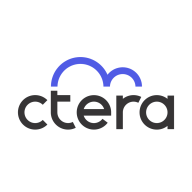


CTERA Enterprise File Services Platform and NetApp Cloud Insights are competing in cloud storage and analytics. CTERA holds an edge for secure file sharing and data protection, while NetApp excels in advanced data analytics and monitoring.
Features: CTERA is valued for its secure file sharing, decentralized data protection, and integration of cloud and on-premises file services. NetApp Cloud Insights stands out for cloud resource optimization, comprehensive performance monitoring, and deep analytical capabilities.
Room for Improvement: CTERA could enhance user interface intuitiveness, provide more rapid tech support response, and expand integration options with third-party services. NetApp Cloud Insights may benefit from a more user-friendly dashboard, reduced complexity in deployment, and enhanced integration for multi-cloud environments.
Ease of Deployment and Customer Service: CTERA offers a decentralized security-focused deployment, often tailored with personalized customer service. In contrast, NetApp focuses on a streamlined cloud-centric deployment with robust analytics support, backed by extensive documentation.
Pricing and ROI: CTERA generally presents a straightforward, cost-effective pricing model due to its comprehensive security features. NetApp Cloud Insights often incurs higher initial costs but delivers significant ROI through enhanced cloud management and resource efficiency.



IBM Turbonomic offers automation, planning, and right-sizing recommendations to streamline resource management, improve efficiencies, and optimize costs across virtualized environments and cloud platforms.
IBM Turbonomic is valued for its capability to optimize resource allocation and monitor virtual environments efficiently. It facilitates automated decision-making in VM sizing, load balancing, and cost optimization for both on-premises and cloud deployments. Users can leverage insights for workload placement, ensure peak performance assurance, and effectively right-size across VMware and Azure. The ongoing transition to HTML5 aims to improve visual and navigational ease, while expanded reporting features are anticipated. Opportunities for improved training, documentation, and integrations enhance platform usability and functionality.
What Are the Key Features?In finance, IBM Turbonomic aids in maintaining platform efficiency during market fluctuations. Healthcare organizations leverage its capability for resource optimization during high-demand periods to enhance patient care support. Retailers use it for planning in peak seasons, ensuring resources align with fluctuating demand to maintain performance continuity.
The CTERA Enterprise File Services Platform provides a cloud-native global file system over public and private object storage, revolutionizing the world of hybrid cloud data solutions. Enhanced by a rich data services ecosystem, CTERA enables enterprises to gain full control of their data for optimal edge performance, data insight, and governance. The platform focuses on security, providing features like data encryption, access controls, and ransomware protection. Centralized management tools enable efficient data control and monitoring. The platform is being used to replace legacy NAS and file servers, especially at remote locations, and simplify backup and disaster recovery of file data while providing the flexibility of multi-cloud deployments with infinite scalability. CTERA is at the core of hybrid cloud transformations of some of the world’s largest banks, healthcare organizations, global media groups, and government agencies, in deployments that scale to tens of petabytes.
NetApp Cloud Insights is an infrastructure monitoring tool that gives you visibility into your complete infrastructure. With Cloud Insights, you can monitor, troubleshoot and optimize all your resources including your public clouds and your private data centers.
We monitor all Cloud Migration reviews to prevent fraudulent reviews and keep review quality high. We do not post reviews by company employees or direct competitors. We validate each review for authenticity via cross-reference with LinkedIn, and personal follow-up with the reviewer when necessary.